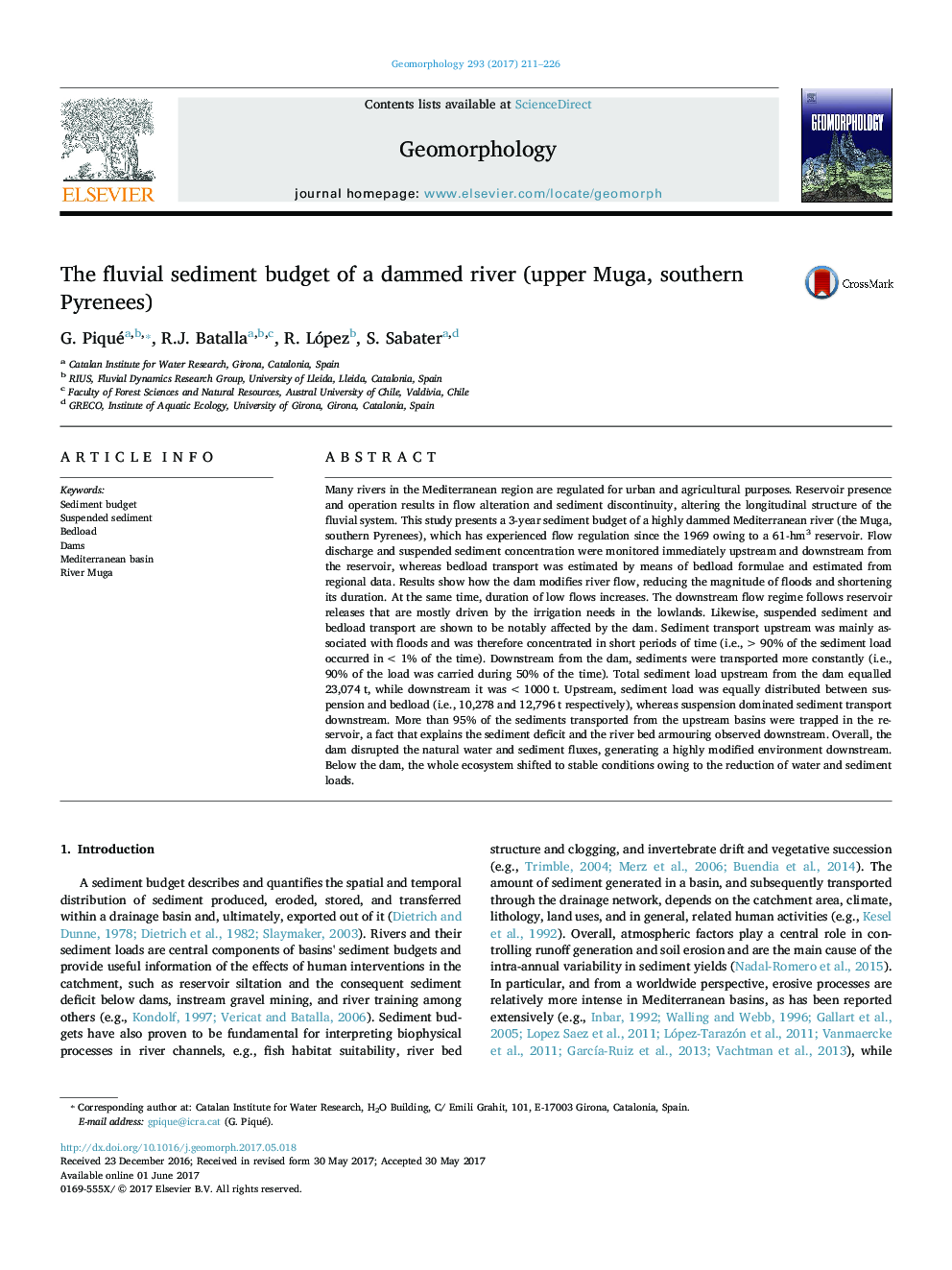| کد مقاله | کد نشریه | سال انتشار | مقاله انگلیسی | نسخه تمام متن |
|---|---|---|---|---|
| 5780850 | 1413842 | 2017 | 16 صفحه PDF | دانلود رایگان |

- Flow patterns upstream and downstream the dam differ due to reservoir operation.
- Upstream, sediment transport is restricted to floods and occurs in short periods of time.
- Downstream, suspended sediment transport predominates; bedload is negligible.
- Sediment trapping in the reservoir reaches up to 95% of the total load.
Many rivers in the Mediterranean region are regulated for urban and agricultural purposes. Reservoir presence and operation results in flow alteration and sediment discontinuity, altering the longitudinal structure of the fluvial system. This study presents a 3-year sediment budget of a highly dammed Mediterranean river (the Muga, southern Pyrenees), which has experienced flow regulation since the 1969 owing to a 61-hm3 reservoir. Flow discharge and suspended sediment concentration were monitored immediately upstream and downstream from the reservoir, whereas bedload transport was estimated by means of bedload formulae and estimated from regional data. Results show how the dam modifies river flow, reducing the magnitude of floods and shortening its duration. At the same time, duration of low flows increases. The downstream flow regime follows reservoir releases that are mostly driven by the irrigation needs in the lowlands. Likewise, suspended sediment and bedload transport are shown to be notably affected by the dam. Sediment transport upstream was mainly associated with floods and was therefore concentrated in short periods of time (i.e., >Â 90% of the sediment load occurred in <Â 1% of the time). Downstream from the dam, sediments were transported more constantly (i.e., 90% of the load was carried during 50% of the time). Total sediment load upstream from the dam equalled 23,074Â t, while downstream it was <Â 1000Â t. Upstream, sediment load was equally distributed between suspension and bedload (i.e., 10,278 and 12,796Â t respectively), whereas suspension dominated sediment transport downstream. More than 95% of the sediments transported from the upstream basins were trapped in the reservoir, a fact that explains the sediment deficit and the river bed armouring observed downstream. Overall, the dam disrupted the natural water and sediment fluxes, generating a highly modified environment downstream. Below the dam, the whole ecosystem shifted to stable conditions owing to the reduction of water and sediment loads.
87
Journal: Geomorphology - Volume 293, Part A, 15 September 2017, Pages 211-226